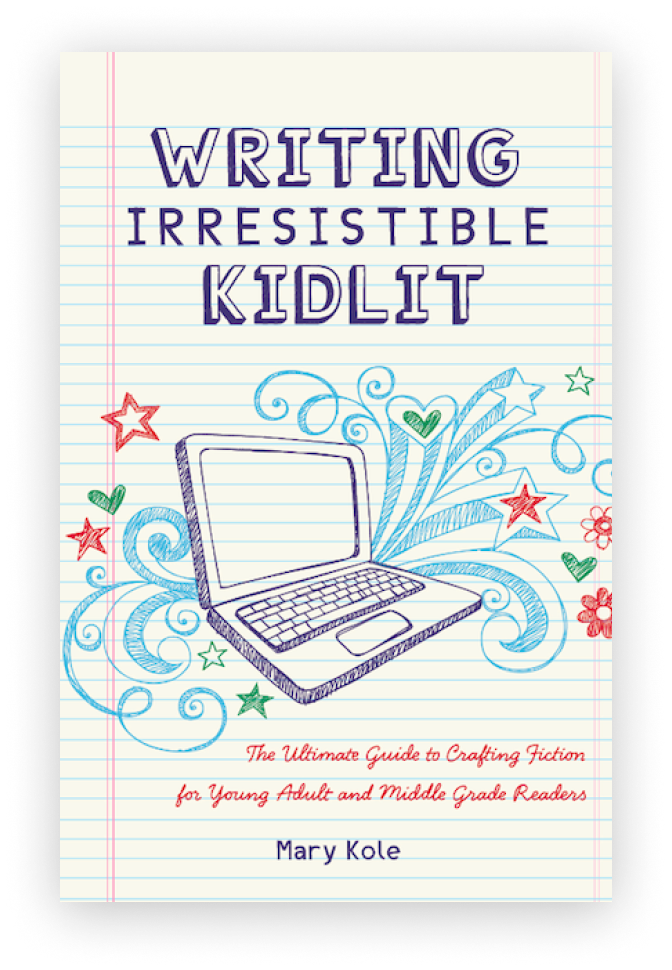Writing a Climactic Reveal
By Mary Kole
Mary Kole is a former literary agent, freelance editor, writing teacher, author of Writing Irresistible Kidlit, and IP developer for major publishers, with over a decade in the publishing industry.
As an aspiring writer, you might be looking for ways to improve your storytelling craft. And to do so, you must learn how to create a perfect story climax that satisfies your readers and leaves them feeling emotionally fulfilled. In certain types of stories, this means putting together a compelling climactic reveal that combines the right ingredients, character and action beats, and genre expectations. A climatic reveal isn’t expected in every type of story, but if you want to do one, you’ll want to make sure it goes off with a bang! In this article, I'll share everything you need to know about crafting an appealing climactic reveal, including the most common mistakes writers make and how to avoid them.
What is a Climactic Reveal?
A climactic reveal is the moment in your story where everything comes together for the protagonist and antagonist, with your plot arcs and character arcs finally converging. However, this is also the point during which you will deploy a piece of information that you’ve been withholding for the entire novel structure, which changes everything. It's the point at which your readers finally understand what's been happening all along. It's the proverbial "light bulb" moment that brings clarity and resolution to the story, and can also be a shock twist or reveal.
Crafting a Climactic Reveal
To craft the perfect climactic reveal, you first need to understand its fundamental ingredients. One is a piece of information that matters deeply to one or more characters, and that changes what readers have thought was going on for the entire story idea. Your climactic reveal should create a sense of tension that keeps your readers on the edge of their seats. The new information twist that’s revealed should also seem inevitable but fresh and shocking. That’s what gets all of the BookTok influencers talking. An example would be Colleen Hoover’s Verity, which ends with information that changes the entire meaning of the story. This is a drastic version of a climatic reveal, but that’s sort of the point.
Your climactic reveal should provide an emotional payoff to your readers. It should feel satisfying and rewarding after all the emotions they've gone through with your characters. Now that you know what a climactic reveal is and its ingredients, it's time to delve into the execution. Here are the steps you should take to ensure your climactic reveal has maximum emotional impact.
First, you’ll want to build up to the reveal—create some suspense by leading up to the reveal by opening a loop or crafting a mystery that’s not fully resolved until the climax. This can be done by generating a sense of danger, high stakes, or uncertainty or by having an event that everyone has been waiting for finally take place. For example, readers have been waiting for the mysterious older brother to return for the entire story. When he does, he’s either the opposite of what readers were primed to believe, or maybe he’s not a blood relative at all. The fun of a climactic reveal is to play with reader expectations, especially if you’ve been writing a mystery or thriller story and playing with red herrings and macguffins already, or if you’ve writing a psychological thriller or a novel with an unreliable narrator.
The climactic reveal should be big enough to justify the build-up, though. It should be shocking and have a wow factor that leaves readers stunned, but it can’t come completely out of left field. The best type of climactic reveal will be hiding in plain sight, because hints will have been embedded into the novel outline all along.
The climax of your story is the point at which your main character faces their greatest challenge (whether from an antagonist or a combination of internal conflict and external conflict), and they must dig deep and come up with a solution. In this moment, the character beats become essential, as every action they take will have an effect. Their decisions should have meaning and should reflect what they've learned over the course of the story, which ties into the story’s theme.
To have an effective climactic reveal, the character’s action beats also need to be appropriately timed. The action rising to the climax should escalate, building up to that moment where the reveal happens. The tension and stakes should increase with the action until the reveal occurs.
Common Climactic Reveal Mistakes
Many writers make mistakes when it comes to crafting their climactic reveal. One of the most common is to make the reveal too predictable. Predictable endings are boring, and your readers will lose interest as they pass the midpoint, because they can anticipate what might happen later. You have the power to create a compelling story with an ending that will leave your readers shocked in a great way.
Another mistake writers make is to force an unrealistic climax into their story, simply to have some kind of climactic reveal and try to get readers talking. Your climax should feel organic and inevitable, though fresh and surprising. It’s hard to do, that’s why comparatively few stories really swing for the fences with a shocking climactic reveal. It should be a natural progression of the story, rather than coming out of nowhere.
Crafting the perfect climactic reveal can be challenging, but if your target audience and genre will expect one for the story you’re writing, you should try to pull it off. By understanding the fundamental ingredients of a climactic reveal, executing one with maximum emotional impact with the right character and action beats, and avoiding the most common mistakes, you can create an ending that will leave your readers talking at book club.
So go ahead and experiment with your climactic reveal. It may take a few tries to get it right, but when you achieve the perfect blend of tension, emotion, surprise, character and action beats, and timing. Once you nail a climactic reveal, it's a deeply satisfying feeling that will make you proud of your novel ending.
This post contains affiliate links.

Click here to purchase Writing Irresistible Kidlit, my book on fiction craft for MG and YA novels, out from Writer's Digest Books. This will show you my writing craft philosophy and give you lots of valuable advice, including tips for the novel revision process and self-editing. There are over 35 example novels cited and discussed throughout. It’s a valuable resource for any writer’s toolkit.
Click here to purchase Irresistible Query Letters, my book on query letters, including over forty examples with comprehensive notes on each one. There’s a ton of submission advice, best practices, and insider information in these pages, and you’ll really enjoy seeing what other writers are doing in the slush.
Click here to purchase Writing Interiority: Crafting Irresistible Characters, my book on interiority and character creation. Explore your protagonist’s thoughts, feelings, reactions and interpretations, expectations, and inner struggles to create a rich, immersive experience. This guide will empower you to create characters who live and breathe on the page, fostering an unbreakable bond with your audience.





